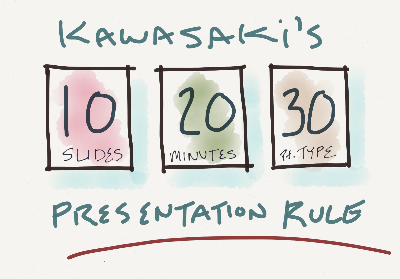Becoming a Great Presenter

Did you know that becoming a Presenter is the most common fear among humans? There’s no denying that giving a presentation is difficult. However, assistance is on the way.
Some people have a natural talent for giving presentations. They’re charismatic, articulate, and persuasive. I can think of a handful right now: Bill Clinton, Martin Luther King Jr., and, of course, Steve Jobs in the IT industry.
However, not everyone is born with the ability to tell a good story, and not everyone is born with the ability to hold an audience’s attention. And what’s the good news? Both can be made better.
If you want to establish yourself as a fantastic presenter, you’ll need to practice. These six pointers will help you leave a lasting impression as a professional presenter.
-
Practice

Naturally, you’ll want to practice your speech several times. While finding time to practice can be tough for people with busy schedules, it is necessary if you want to produce an engaging presentation. If you want to sound fantastic, write down your speech rather than winging it — a script is your best friend if you’re concerned about speaking.
Practice presenting your talk in the location where you’ll be giving it. Rehearse lines in multiple positions, according to some acting strategists. The more you mix and set up your speech, the more at ease you’ll be with it. Perform a dry run for a friend or colleague, or record and replay your presentation to see where you need to improve. You can try out on different Application software’s and website where you can practice speaking.
-
Be Dynamic

We’ve all sat through dull meetings and presentations. It may have happened at school or at work. They’re either overly long or simply uninteresting. It’s best not to be that Presenter.
Your audience is there to learn something, but they also want to be entertained, which can promote engagement and help them absorb more knowledge. Make your presentation lively by inviting the audience to participate; make them a part of it. Feel as if you’re speaking directly to each of them by looking them in the eyes.
There’s nothing wrong with having a script unless it starts to make you look robotic and interrupts your audience’s interaction. Instead, try improvising from time to time and according to the reactions of your audience.
-
Try on Visual Methods

PowerPoint presentations were, and continue to be, the standard, but routine may be repetitive and boring.
Get out of your comfort zone and experiment with new ways of communicating. Create engaging visual material and sparkle to your slides to help them stand out and draw attention to your core goal: Present, educate, and engage your audience.
-
Master the introduction

Master the art of the introduction. Get to the point quickly. Start by saying, “This won’t take long.” This automatically makes you sound nervous and like you’d rather be at the dentist getting drilled. Also, advise against beginning with “Good afternoon, ladies and gentlemen.”
Allow your audience to believe that they are aware of the time of day and who they are. Also, it’s 2022, and no one has time for unnecessary words—first impressions are important, especially when giving a speech. The first words that come out of your mouth have the power to make or ruin your presentation. As a result, begin with something that will grab their attention.
-
Keep it Simple

When preparing your presentation, keep the following question in mind: What is the main message that I want my audience to remember? One should be able to convey the important message in a few sentences.
Some experts suggest a 30-second “elevator pitch,” while others suggest writing it on the back of a business card or saying it in little more than 15 words.
Whatever rule you use, the important thing is to keep your main message focused and concise.
And if what you’re about to say isn’t going to help you communicate that fundamental idea, don’t say it.
-
10-20-30 Rule

The 10-20-30 Rule of PowerPoint, as recommended by Kawasaki, states that a presentation should include ten slides, last no longer than twenty minutes, and use a type no smaller than thirty points.
Not every person comes naturally with excellent presentation skills; they must be developed and improved over time. You must always work on polishing your talents to get better and better, like with most things in life.
Use the nine proven presentation tips we discussed in this post to improve your presentation skills You’ll discover that speaking at important meetings becomes easier and easier as a result, and you’ll start nailing it every time.
